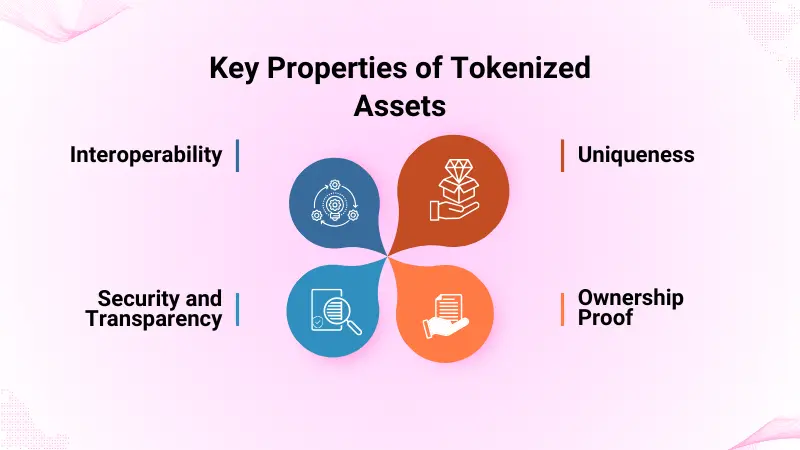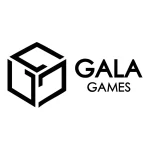What if the sword you earned after hours of playing your favorite game could actually be yours? Not just a digital item locked inside the game’s server, but a true asset that you could view, trade, or even use across different games. This is exactly what NFT-based games are making possible.
Through tokenization and real-world ownership of in-game assets, NFTs are turning in-game items into more than just arranged pixels on the screen. They are becoming digital property with real-world value. For players, it means complete control over their gameplay.
But how is this made possible to work? Let’s talk about that and more in this blog, so let’s dive in.
What are NFTs?
NFTs have redefined digital ownership by representing unique assets on the blockchain. Blockchain serves as the foundation for NFTs, enabling the creation of digital assets that are unique and cannot be replicated.
Unlike cryptocurrencies like Bitcoin or Solana, which are fungible, meaning that their units are interchangeable. One another, NFTs are non-fungible, meaning that each one is distinctive and uniquely verifiable. In gaming, NFTs can represent items like skins, avatars, virtual worlds, achievements, or badges.
How Do NFTs Work in Gaming?
While NFTs share the same foundation as traditional cryptocurrencies, they distinguish themselves through some unique properties. These properties are as follows:
- NFTs leverage blockchain technology to provide a secured and verifiable source to own and trade digital assets. Each NFT that is minted through blockchain stores its records of creation, ownership history, and transaction details.
- NFTs also utilize smart contracts to automate the process of buying, selling, and transferring, eliminating the need for any intermediary. Digital ecosystems like marketplaces and gaming platforms utilize NFTs to offer a distinct experience for users.
- NFTs offer potential interoperability, allowing users to transfer their assets seamlessly across the supported platforms, creating a more interconnected digital economy.
- Additionally, blockchain also enables ownership of NFTs, which allows multiple users to own a share of a high-value asset, such as rare in-game items.
This combination of NFTs and blockchain is transforming the gaming industry through the introduction of new economic models and ownership structures. The system allows players to own their in-game assets, such as skins, weapons, and characters, as NFTs that are stored on a blockchain network.
What is In-Game Asset Tokenization?
Tokenization is the process of creating a digital representation of a real-world asset and registering it on the blockchain. It is this digitization process that allows for a unique and anonymous representation of a real asset on the blockchain.
In terms of gaming, it simply refers to the process of converting something of value, like weapons, skins, avatars, etc., into a useful digital token or some other form of digital ledger. Addition to all that, this process also leverages smart contracts to divide up the whole asset into smaller units, promoting fractional ownership.
In fact, tokenization is a core part of Blockchain Game Development, allowing developers to create secure, tradable, and interoperable in-game assets that enhance both player ownership and game economies.
Key Properties of Tokenized Assets
Below are some distinctive properties that tokenized assets possess:
Uniqueness
Each tokenized item is represented as an NFT with a unique identifier (metadata such as serial numbers or detailed descriptions), ensuring authenticity and rarity. Even items that seem similar (e.g., two swords) have distinct features.
Ownership Proof
When an in-game item is turned into an NFT, its ownership is permanently recorded on the blockchain, which means it can’t be changed. This means that anyone who is on the same blockchain network can publicly verify who owns the assets, making the ownership more decentralized, so players don’t have to rely on game developers’ servers or databases.
Interoperability
Interoperability means that tokenized assets can be used in many games, as long as they follow a certain blockchain standard. For instance, if you own a sword in one NFT-based game, you can sell it, trade it, or transfer it freely outside the game’s platform. This interoperability gives players more options for using their assets in different ways or moving them around.
Security and Transparency
Since NFTs are stored on a blockchain, their history of asset creation, ownership titles, their transfers, transactions, etc., are all permanently recorded and cannot be changed. This prevents the duplication or fraudulent copying of in-game items. Players acquire a sense of trust that their ownership and assets’ authenticity are transparent and can be verified by anybody.
Ownership in NFT-Based Games
NFTs rely on blockchain to maintain a decentralized, transparent ledger for in-game assets. When a player acquires an NFT, it is linked to their digital wallet, giving them true ownership. Players can move, sell, or trade assets independently of the game developer.
The NFT-based games offer ownership in the following ways:
Blockchain-Based Records
The ownership records of each NFT are recorded on a decentralized blockchain ledger that is transparent and immutable, meaning once a record is audited onto it, then it cannot be tampered with.
True Digital Ownerships
In NFT-based games, players actually own the NFT itself, meaning that, rather than just having a license to use it, they own a certificate of ownership for that unique digital item’s NFT directly in their cryptocurrency wallet, which they can buy, sell, or trade anytime.
Freedom to Trade and Transfer
Now, since this ownership of assets is on the blockchain itself, players can simply carry out buy, sell, or trade functions. For their NFT-based in-game asset on external marketplaces without the need for asking the developers’ permission.
Player Control
Players get to enjoy full control over their virtual property, even if in the future the game is discontinued by the game maker. Ownership of the NFT resides with the player and not with the programmers’ servers, meaning players can still use assets in other NFT games.
Real-World Examples of NFT Ownership in Games
Below are some of the real-world examples of popular NFT-based gamers:
Axie Infinity
Players of Axie Infinity own unique digital creatures called Axies as NFTs. Axie Infinity also holds the record for the 5th highest-grossing game of all time in terms of NFT sales. According to Guinness World Records, Axie is the most popular virtual collectible game, with $4.2 billion in annual transactions as of December 2024.
Virtual Protocol
The VIRTUAL Protocol game lets you make all kinds of AI agents that can talk, text, and move in different virtual worlds. You can think of it as making a digital character that can do things like act like a movie character, help you write a scary story, or even be a digital version of yourself.
The Sandbox
The Sandbox is a fun, interactive game that lets players make and design their own adventures and earn money with the game’s own cryptocurrency. It lets players make, buy, and trade assets in the form of NFTs, which means gamers really own everything they make.
Decentraland
Decentraland is a virtual world that uses blockchain technology to let players make their own games, tools, marketplaces, and other content. The Ethereum blockchain powers this decentralized virtual reality platform.
Gala Games
Gala Games is a blockchain-based gaming platform that uses play-to-earn (P2E) mechanics and nonfungible tokens (NFTs). Players can vote on important game development decisions and keep full ownership of their in-game assets.
Conclusion
To wrap it up, NFTs are not just a momentary trend in the gaming industry, but they are here to last. They offer groundbreaking possibilities for game makers to create more immersive and engaging experiences, and for players. They provide them with ownership over their assets among the games that they love playing.
Whether you’re a gamer, developer, or simply a tech enthusiast, the journey of NFTs in gaming is certainly one worth following. Technoloader can help you to adapt to this revolution of gaming that is here to last. We have expertise in the NFT space and with building the next generation of games.
Contact us today and get started with your game journey.
 +91 7014607737
+91 7014607737
 info@technoloader.com
info@technoloader.com









